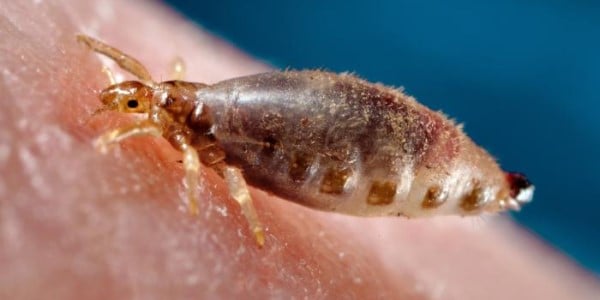Key points
- Louse-borne relapsing fever (LBRF) occurs in regions of Africa. Risk of infection in the United States is extremely unlikely if there was no travel to an endemic region.
- LBRF can be diagnosed with direct visualization of spirochetes in a peripheral blood smear in symptomatic, untreated patients early in the course of infection.
- Regular changes of clothing and bedding and showers with hot water are the most important steps to treat a body louse infestation.

Diagnosis and testing
Patients with LBRF experience high levels of spirochetemia during febrile episodes. LBRF can be diagnosed with direct visualization of spirochetes in a peripheral blood smear in symptomatic, untreated patients early in the course of infection.
Polymerase chain reaction (PCR) assays are available through a limited number of laboratories. PCR is more sensitive than microscopy and may also be used during asymptomatic periods or soon after treatment initiation. CDC provides PCR testing for suspected LBRF at the request of state health departments. These tests can cross-react with other Borrelia species, making travel and exposure history important when interpreting diagnostic test results.
Treatment
LBRF has been successfully treated with a single dose of antibiotics. However, using a combination of penicillin and doxycycline or azithromycin for a longer course, when resources allow, can reduce rates of recurrence and Jarisch-Herxheimer reactions.
All patients undergoing treatment for LBRF should be closely monitored for at least 4 hours after administering antibiotics for a Jarisch-Herxheimer reaction, a sudden worsening of symptoms that may include rigors, hypotension, and high fever. Jarisch-Herxheimer reactions occur in more than half of patients undergoing treatment for LBRF and can be fatal.
Regular changes of clothing and bedding and showers with hot water are the most important steps to treat a body louse infestation. Topical medications can also be used (e.g., permethrin, pyrethrins, benzyl alcohol, ivermectin, malathion, spinosad).
Consult with an infectious disease specialist when treating patients with severe symptoms or immunocompromising conditions.
Combination treatment (preferred)
Initial treatment:
| Age category | Drug | Dosage | Duration (days) |
|---|---|---|---|
| Adults | Penicillin G procaine, intramuscular | 400,000–800,000 units | Single dose |
| Children | Penicillin G procaine, intramuscular | 200,000–400,000 units | Single dose |
Subsequent treatment (beginning 12–24 hours after initial treatment):
| Drug | Dosage | Duration (days) | |
|---|---|---|---|
| Adults | Doxycycline, intravenous or oral (preferred) | 100 mg every 12 hours | 7 |
| Azithromycin, oral | 500 mg daily | 7 | |
| Children | Doxycycline, intravenous or oral (preferred) | 2.2 mg/kg per dose, every 12 hours, maximum 100 mg dose | 7 |
| Azithromycin, oral | 10 mg/kg daily, maximum 500 mg/day | 7 |
Single-dose treatment
| Age category | Drug | Dosage |
|---|---|---|
| Adults | Penicillin G procaine, intramuscular | 800,000 units |
| Doxycycline, oral | 200 mg | |
| Children | Penicillin G procaine, intramuscular | 200,000–400,000 units |
| Doxycycline, oral | 4.4 mg/kg per dose, maximum 200mg dose |
Disease reporting
LBRF is reportable in some states. Report LBRF cases to public health authorities to help prevent additional cases. Contact your local or state health department with questions about disease reporting.
